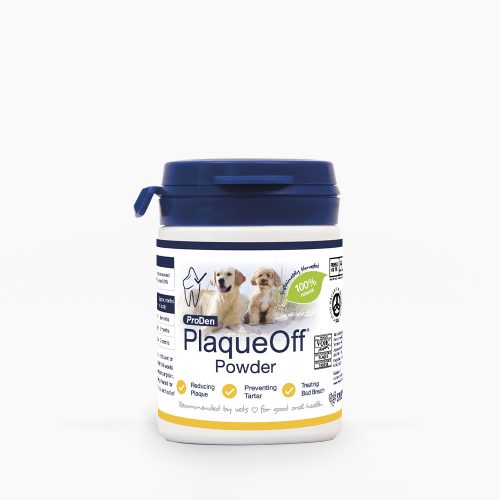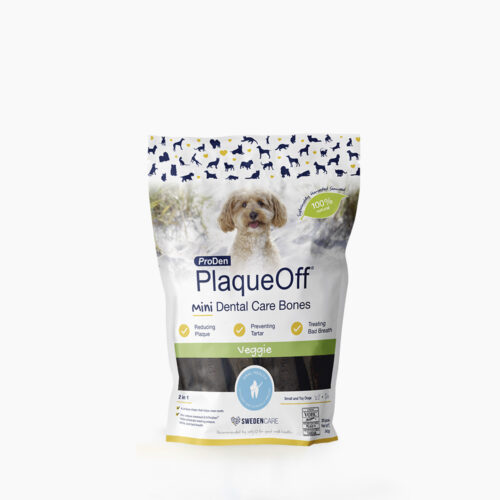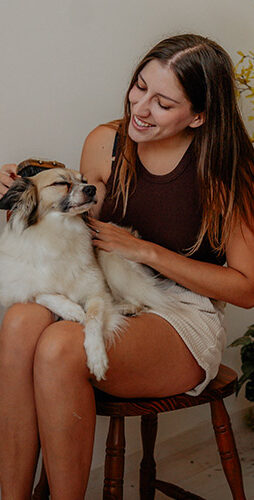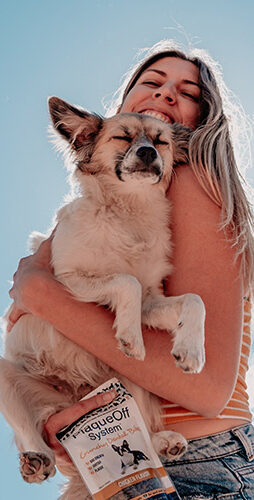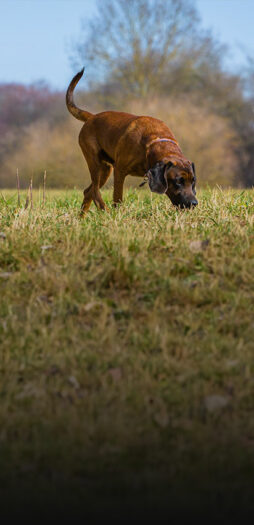You have probably experienced that you pulled away when a dog greeted you because of the dog’s bad breath. Dogs like to greet us by licking us humans in the face, something which there are divided opinions about, it is normal behavior for them. However, bad breath is not a normal condition. In the long run, the cause can lead to painful inflammations or worse. But luckily, as a dog owner, you can do a lot to keep your dog’s mouth healthy.
A common belief among us humans is that it is normal for dogs to have bad breath, but a healthy dog should not have bad breath. A healthy dog’s breath can smell like the food the dog eats, a scent that we humans do not always appreciate in and of itself. But there is a difference between smelling dog food and how a dog smells from his mouth when his dental and oral health is poor.
Dog bad breath is a common sign of plaque
Bad breath is often a sign of plaque, but it can also be due to oral tumors, nutritional deficiencies, kidney and liver diseases, something stuck in the mouth, or the dog eating something toxic. However, the most common cause is plaque formation, which in the long run can lead to painful gingivitis and more serious diseases. Plaque forms every day in the dog’s mouth, therefore daily routines of tooth brushing and food supplements are important.
Although a dog’s bad breath is the most common sign of plaque, it’s also good to keep an eye out if your dog loses weight, has red and/or swollen gums, has a poor appetite, or seems sensitive around their teeth. The sooner you take care of plaque, the better because when plaque is mineralized and calcified by saliva, it develops into tartar. Tartar can lead to inflammation in the dog’s gums, which can be very painful. Poor dental hygiene can also have other serious consequences such as urinary tract infections, pyorrhea (swelling of the gums), and even kidney, liver, and heart diseases.
Should you go to the vet when your dog has bad breath?
It is often very long before we notice that dogs have sore mouths since they are experts at hiding pain. Therefore, it is important that you take care of your dog’s teeth yourself and look out for symptoms of dental and mouth problems on a regular basis. If you notice that your dog’s bad breath does not go away despite dietary supplements and brushing or that your dog loses appetite, has difficulty eating normally, or that the gums become red and swollen, you should go to the vet. You can also notice from the dog’s behavior that something is not right if, for example, he or she tries to scratch or move his paws around his or her mouth.
You can remove plaque and lighter tartar yourself at home, but a heavier tartar coating usually needs a veterinarian to help you remove it. The veterinarian removes plaque and calculus from the crowns of the teeth and the pockets in the gumline using an ultrasonic scaler that has minimal impact on the enamel of the teeth. At the vet, you also get tips and advice on how to maintain your dog’s teeth to prevent future dental issues.
How to help prevent bad breath in your dog
By brushing your dog’s teeth regularly, you can prevent plaque, tartar, and bad breath in your dog. In addition, it allows you to detect early if there are other problems with your dog’s teeth or mouth.
The best thing is of course to get your dog used to you handling their teeth as early as possible. Take it gently, step by step, and make it a positive moment together with your dog with lots of cuddles and rewards. A flavored toothpaste on a microfiber cloth can help. It is important that you use toothpaste specially developed for dogs, partly because it tastes better for the dog and because it is adapted to the dog’s oral health and body. Brush gradually and increase slowly if your dog is a beginner at brushing teeth, and let it keep its mouth closed if it wants to and instead just lift the lip. Remember to reward and encourage! It is important that your dog gets a positive feeling from tooth brushing and does not see it as something unpleasant.
8 tips on how to brush your dog’s teeth and avoid bad breath, plaque, and tartar
- Start as early as possible, preferably when the dog is a puppy. However, not during the period when they lose their baby teeth around 4-6 months of age, as it can be uncomfortable for the puppy. If you have an adult dog, it’s never too late to start, as long as you do it slowly!
- If toothbrushing is difficult, you can start with a microfiber cloth that you put on your finger.
- Begin with short moments, a few seconds at a time, and increase gradually.
- Get the dog used to you touching the mouth as a first step, lifting the lips and cheeks, and touching the teeth.
- Choose a toothpaste formulated for dogs that taste good to them. Remember that it is the mechanical cleaning that is most important!
- It doesn’t matter what time of day you brush, but choose when it suits you and your dog’s routine.
- Be careful not to hold the nostrils, as dogs often find this uncomfortable.
- Be extra careful along the gum line, as this is where the bacteria gather and inflammation can form.
In combination with tooth brushing, veterinarians often recommend dietary supplements to prevent plaque. It is important that it is a VOHC-labeled food supplement. VOHC stands for Veterinary Oral Health Council and they approve anti-plaque and calculus products that meet their specific standards. The majority of Swedencare’s ProDen PlaqueOff® products for dogs are VOHC-labeled and are available in several different flavors as reward pieces or chews for your dog and as a powder to sprinkle on wet or dry food daily. The products can also be perfectly combined with each other. ProDen PlaqueOff® contains the unique kelp A.N ProDen™ which is a 100% natural kelp. It is proven in clinical trials to help reduce plaque, tartar, and bad breath when used as directed. ProDen PlaqueOff® products contain no coloring, additives, or preservatives.
